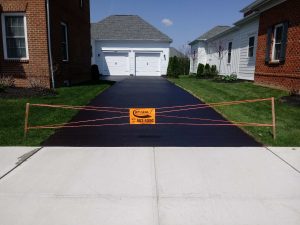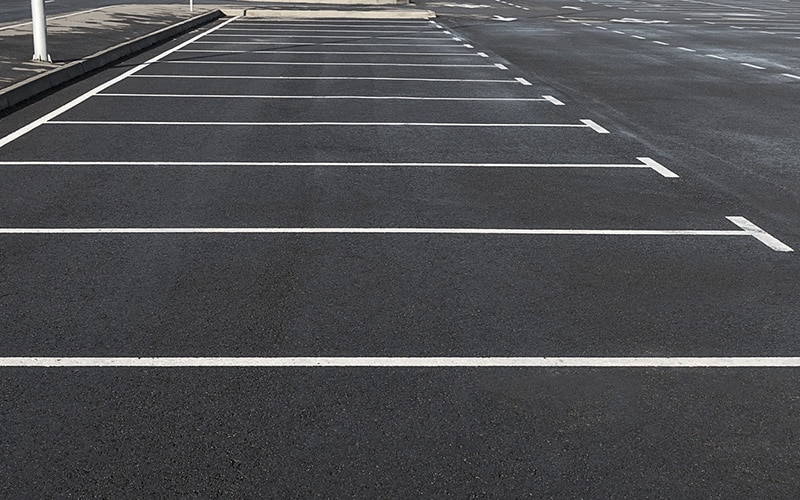Warm Mix Asphalt: A Sustainable Option for Pavement
Hot Mix Asphalt (HMA) has arised as a leading sustainable selection for pavement solutions, offering a myriad of innovative modern technologies and environmental advantages. Its ability to reuse materials and lower power intake provides a compelling situation for its fostering in roadway building tasks. In addition, the lasting performance and sturdiness of HMA make it a preferred alternative for facilities growth. As the need for environment-friendly construction techniques grows, exploring the subtleties of HMA's sustainability can provide valuable understandings right into the future of pavement solutions.
Environmental Benefits of Warm Mix Asphalt

Moreover, Hot Mix Asphalt assists to reduce urban heat island results. Its dark shade absorbs sunshine, decreasing the quantity of warmth mirrored back right into the environment compared to lighter-colored sidewalks. This can decrease ambient temperature levels in metropolitan locations, decreasing the demand for air conditioning and inevitably reducing power consumption.
In enhancement, Warm Mix Asphalt adds to enhanced stormwater management. Its permeable nature enables water to infiltrate the sidewalk and charge groundwater products, minimizing overflow and the threat of flooding. These ecological advantages make Warm Mix Asphalt a sustainable option for paving highways and roadways.
Energy Efficiency in HMA Production
Is energy performance an important element in the manufacturing of Warm Mix Asphalt (HMA)? Energy plays a significant role in the manufacturing of HMA, affecting both cost and environmental sustainability. One vital facet of power performance in HMA manufacturing is the use of cozy mix asphalt (WMA) technologies.
Additionally, advancements in plant technologies have resulted in more energy-efficient HMA manufacturing processes. Modern plants are created with functions like recycled asphalt sidewalk (RAP) processing capacities, efficient heater systems, and boosted insulation, all adding to power savings. By maximizing energy use in HMA manufacturing, the market can reduce its carbon footprint while maintaining high-quality pavement products. Energy performance is, therefore, an essential consideration in ensuring the sustainability of Warm Mix Asphalt manufacturing.
Recyclability of Warm Mix Asphalt
The recyclability of Hot Mix Asphalt (HMA) is a crucial aspect of its sustainability and long-lasting ecological impact. HMA is among the most recycled products in the USA, with over 100 million loads of redeemed asphalt sidewalk (RAP) being reused annually in brand-new pavement building. Reusing HMA supplies a number of environmental advantages, such as decreasing the demand for virgin materials, reducing energy usage throughout manufacturing, and lowering the quantity of waste sent out to landfills.
The process of recycling HMA involves crushing the existing pavement, squashing it into smaller items, and mixing it with new aggregate and asphalt binder to develop a recycled mix. This recycled mix can typically carry out as well as or perhaps much better than standard HMA, while calling for less resources and producing lower greenhouse gas emissions. By integrating RAP into brand-new pavement projects, roadway agencies can preserve natural resources, reduce expenses, and minimize the ecological footprint of roadway building and upkeep tasks. In general, the recyclability of HMA plays a substantial duty in promoting lasting techniques within the pavement market.

Long-Term Efficiency of HMA
Asphalt sidewalks demonstrate sturdiness and strength over a prolonged duration, mirroring the long-term efficiency of Warm Mix Asphalt (HMA) The longevity of HMA can be attributed to its capacity to endure hefty traffic tons, rough weather, and the results of aging. Research studies have actually revealed that well-designed and appropriately created HMA sidewalks can last for two decades or even more with regular upkeep. The key to making best use of the lasting performance of HMA lies in making use of high-grade products, complying with finest techniques in building and construction, and applying effective maintenance strategies. Proper water drainage, regular assessments, and prompt repair work are necessary for preserving the structural honesty of HMA sidewalks over time. Additionally, improvements in HMA modern technology, such as using polymer-modified binders and cozy mix asphalt, have even more improved the longevity and longevity of HMA pavements. By prioritizing quality building and construction and maintenance techniques, HMA remains to prove itself as a cost-efficient and lasting service for durable sidewalk framework.

HMA: Longevity and Sustainability
Demonstrating both longevity and sustainability, Warm Mix Asphalt (HMA) has come to be a keystone in the construction of lasting pavement infrastructures - hot mix asphalt. HMA's durability comes from its capacity to hold up against heavy lots, severe weather, and high website traffic quantities, making it a trusted choice for highways, freeways, and airport terminal runways. The structure of HMA, which generally consists of accumulations, binder, and filler, plays a critical function in boosting its durability and resistance to damage
In addition, HMA's sustainability hinges on its recyclability and energy-efficient manufacturing procedure. The capability to recycle reclaimed asphalt sidewalk (RAP) in new HMA mixtures decreases the demand for virgin products and reduces the environmental influence of sidewalk building and maintenance. In addition, the power performance of generating HMA hinges on its reduced mixing temperatures compared to various other sidewalk products, bring about minimized energy usage and greenhouse gas discharges.
Verdict
Finally, hot mix asphalt (HMA) uses a lasting read this article option for pavement with its ecologically pleasant attributes. HMA's recyclability, power effectiveness in manufacturing, and long-lasting sturdiness make it an environment-friendly option for road building and construction. By preserving all-natural sources, lowering waste, and reducing greenhouse gas discharges, HMA plays a crucial duty in promoting sustainability in framework growth. Its capacity to reduce urban heat island results even more underscores its significance in producing environmentally mindful and durable sidewalk systems.
HMA is one of the most recycled materials in the United States, with over 100 million tons of reclaimed asphalt sidewalk (RAP) being reused each year in new pavement construction.The procedure of reusing HMA includes crushing the existing pavement, crushing it into smaller sized items, and blending it with new aggregate and asphalt binder to create a recycled mix.Asphalt sidewalks demonstrate toughness and resilience over an extensive duration, reflecting the lasting performance of Warm Mix Asphalt (HMA) Furthermore, developments in HMA technology, such as the use of polymer-modified binders and cozy mix asphalt, have actually additionally boosted the durability and durability of HMA sidewalks. The have a peek here capability to reuse redeemed asphalt pavement (RAP) in new HMA combinations decreases the demand for virgin materials and decreases the environmental effect Discover More of pavement building and construction and upkeep.